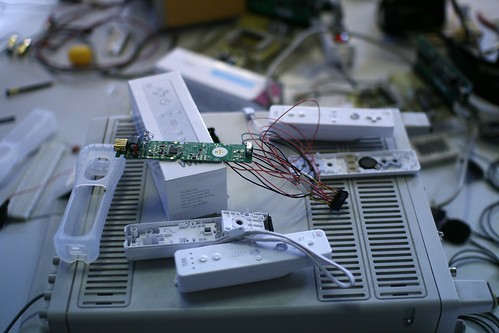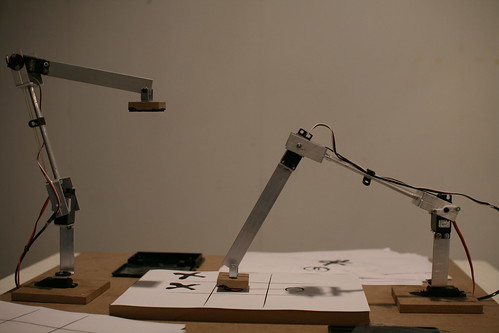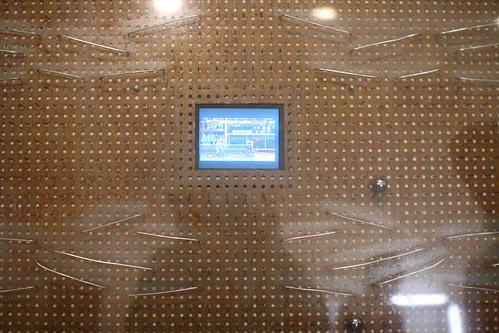Currently in Aix-en-Provence, at the School of Art where I've given a talk yesterday about tangible interfaces (a rerun from my GDC2007 presentation). The talk was part of a workshop called "Workshop Wiimote Hacking. The whole thing was about how to hack the Nintendo Wiimote and turn it into a tool that artists can employ. Students are involved in the process of adding new sensors as well as defining new sorts of usage. Thanks France Cadet for the invitation and Douglas for having taken time to discuss.

The discussion after the presentation revolved around: - How the wiimote might have the potential to become a sort of standard in the living room as the controller. I personally don't predict anything about this. However from current observations of practices, I do think that the Wii is much more than video game device and play an interesting role of multimedia platform in the living room (with photos, usage of personalized mii). In addition, the presence of very focused applications such as wii questions turns it into a platform where facebook-like small application can be played by the family. - Why the game design ideas we have so far on the Wii are so conservative... which turned into why the video game industry is so conservative or how the whole economic system is so controlled by the marketing crowd that it's difficult to go beyond usage of the wiimote as sword/steering-wheel/magic wand. This is a sort of over-statement but it's actually close to the reality. - How this work about tangible interfaces relate to my other work about mobile and pervasive gaming? we discussed the notion of granularity and how complex the game system is when the dimensions reach the city level. Much more than just gesturing in one's own living room, using the city as a game field is complex for lots of reasons (technical, infrastructural, difficulty to have a continuous experience), etc.
Fortunately, there was also an exhibit about games as medium for artists to create and tweak digital worlds. Called gamerz02, there was a bunch of very curious projects.

The one that attracted my attention was Patch&KO (Antonin Fourneau and Manuel Braun): instead of using a joystick people can play Street Fighter 2 using a pachinko interface. In a sense, the player's ability to control the character is disrupted by the semi-random movement of the metal balls. As the designers state, the player has to accept a loss of control. Slightly related was this Tictactoe played by robotic arms I blogged about the other day. In this case, what was explored was that the Tic Tac Toe is a curious game in which the only way to win is to rely on the opponent's fatigue and loose of sight in the game. In the context of two mechanical arms played by a computer, the surest way to win is to avoid playing. Finally, I was also interested by Tchouri by Pascal Silondi, a sort of knife-based interface much more intriguing than always-seen magic wands. Some of the pieces there were maybe slightly easy-going and naive but the whole things made sense and I found find fruitful to make game designers more aware of such work, perhaps some ideas about a workshop/seminar.

